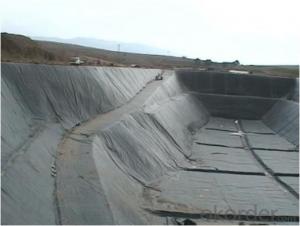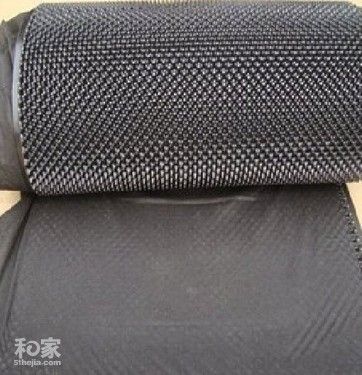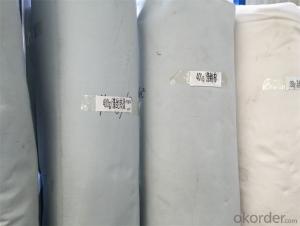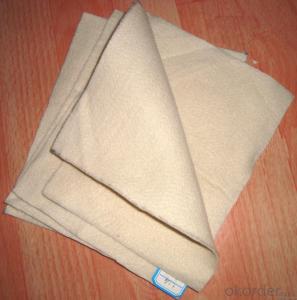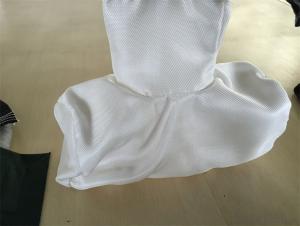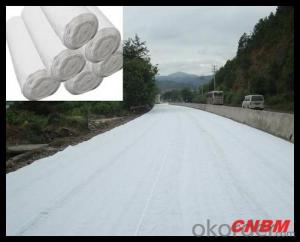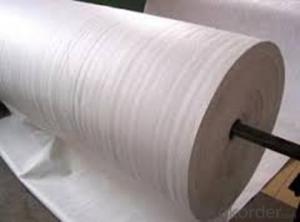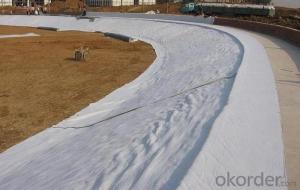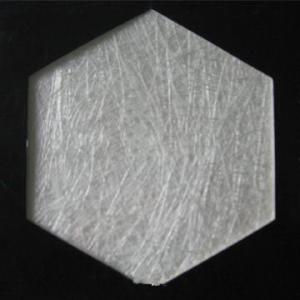Geotextile Fabric for Landscaping - Nonwoven Geotextile for Construction & Real Estate
- Loading Port:
- Tianjin
- Payment Terms:
- TT OR LC
- Min Order Qty:
- 5000 g/m²
- Supply Capability:
- 10000 g/m²/month
OKorder Service Pledge
OKorder Financial Service
You Might Also Like
Packaging & Delivery
| Packaging Detail: | packing with customer requests |
| Delivery Detail: | after we have received you payment |
Specifications
Biaxial geogrid:
1)Raw material: Polyproplene;
2)Width: 1.6~2.5m;
3)High Tensile strength

The mateiral of biaxial tension plastic geogrid is similar with the material of unidirectional tension plastic geogrid. Its chemical property isn't active also. It is extruded by macromolecule polymers, and formed by longitudinal and horizontal tension. This kind of material has high tension strength in both longitudinal and horizontal directions. This kind of structure provides a interlock system for the soil.

| Item | TGSG15 | TGSG20 | TGSG30 | TGSG40 | TGSG45 |
| Longitudinal tensile yield strength per long meter | 15 | 20 | 30 | 40 | 45 |
| Horizontal tensile yield strength per long meter | 15 | 20 | 30 | 40 | 45 |
| longitudinal yield elongation rate | 13 | ||||
| Horizontal yield elongation rate | 16 | ||||
| longitudinal resistance to 2%of deformation | 5 | 8 | 11 | 13 | 16 |
| Horizontal resistance to 5%of deformation | 7 | 10 | 13 | 15 | 20 |
| longitudinal resistance to5%of deformation | 8 | 10 | 15 | 16 | 25 |
| Horizontal resistance to 5%of deformation | 10 | 13 | 15 | 20 | 22 |

(1) Road surface reinforcement of road,railway and airport road;
(2)Maintenance,reconstruction and widening of old road surface(asphaltum road or cement concrete road).
(3)Reinforcement of soft soil roadbed,irrigation channels and water dam.
A. Filtration
The filtration layer of the dykes, river canal, seacoast, concrete slope, retaining walls.
At the same time of preventing the clay granule from passing, it allows the water and the gas pass through freely.
B. Separations:
The isolation of the railway dregs and the roadbed, roadbed and the soft base, different dam materials.
It isolates the soil and the gravel of two kinds different granule pathway from the groundsill or other buildings.
C. Adding muscle:
The highway, railway of retaining wall, slope protection, etc in which distributes the earth stress,
prevents the side-displacement of the earth body and improves the earth body stability.
D. Protections
It prevents the bank from being washed out, protects the bank and the bottom,
prevents the water and soil from being washed away.
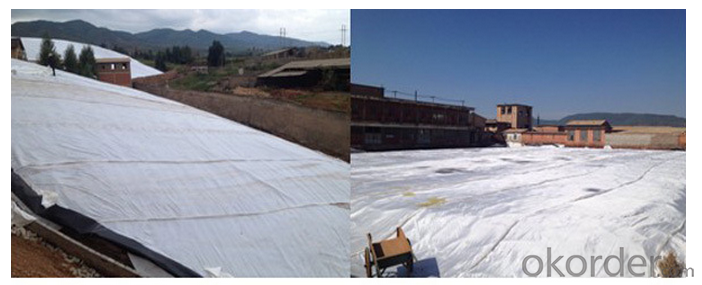
FAQ:
♦ Payment terms: by T/T or L/C |
♦ MOQ:2000 SQM |
♦ If you are interested in our products ,pls advice me the technical index,product weight etc,the more information the better..... |
- Q: 300g / m2 geotextile package is what it means
- 300g / m2 Geotextile: refers to the weight of 300g per square meter (model) 300g / m2 geotextile package: refers to the outsourcing; with 300g of geotextile to wrap something; for example: With 300g / m2 geotextile wrapped gravel. The
- Q: How do geotextiles improve the performance of railway tracks?
- Geotextiles improve the performance of railway tracks by providing a stable and durable foundation. They act as a barrier between the subgrade and the ballast, preventing the mixing of materials and reducing the risk of track settlement. Geotextiles also enhance drainage, preventing water accumulation and maintaining track stability. Additionally, they distribute load more evenly, reducing the pressure on the subgrade and minimizing the risk of track deformations. Overall, geotextiles enhance the longevity, safety, and performance of railway tracks.
- Q: Can geotextiles be used for reinforcement in asphalt overlays?
- Yes, geotextiles can be used for reinforcement in asphalt overlays. Geotextiles act as a separator and provide reinforcement by distributing stress and preventing the mixing of different layers. They help in reducing reflective cracking and increasing the lifespan of the asphalt overlay.
- Q: Can geotextiles be used for reinforcement of paved surfaces?
- Yes, geotextiles can be used for the reinforcement of paved surfaces. Geotextiles are commonly deployed underneath the asphalt or concrete layers of paved surfaces to enhance their strength, stability, and durability. They help distribute the load over a larger area, prevent cracking and rutting, and control the growth of vegetation. Additionally, geotextiles can minimize the potential for reflective cracking and provide separation between different layers, enhancing the overall performance of paved surfaces.
- Q: Can geotextiles be used in the protection of shoreline structures?
- Yes, geotextiles can be used in the protection of shoreline structures. Geotextiles are permeable fabrics that can be placed to prevent erosion and stabilize the shoreline. They can be used as a barrier between the soil and water to prevent soil loss and maintain the integrity of shoreline structures.
- Q: How do geotextiles help with soil confinement in erosion control mats?
- Geotextiles help with soil confinement in erosion control mats by providing a stable and permeable layer that prevents soil erosion. They act as a barrier, holding the soil particles in place while allowing water to pass through, thereby reducing surface runoff and promoting root growth. This prevents the displacement of soil and helps in establishing vegetation, ultimately preventing erosion and improving soil stabilization.
- Q: Can geotextiles be used in geosynthetic encased columns?
- Yes, geotextiles can be used in geosynthetic encased columns. Geotextiles are commonly used in geosynthetic encased columns as a reinforcement material to enhance the load-bearing capacity and stability of the structure. They provide reinforcement and prevent soil erosion or migration, making them suitable for use in geosynthetic encased columns.
- Q: How do geotextiles help in preventing soil compaction?
- Geotextiles help in preventing soil compaction by acting as a barrier between the ground and heavy machinery or vehicles. They distribute the weight more evenly, reducing the pressure on the soil and minimizing compaction. Additionally, geotextiles improve drainage and allow air circulation within the soil, which further helps in preventing compaction.
- Q: What are the limitations of geotextiles?
- Some limitations of geotextiles include their vulnerability to UV degradation, limited effectiveness in high flow conditions, and potential for clogging with fine particles. Additionally, geotextiles may not be suitable for certain applications where high strength or puncture resistance is required.
- Q: How are geotextiles affected by mechanical stress?
- Geotextiles are significantly affected by mechanical stress as they undergo deformation and potential damage due to external forces or loads. The stress can cause the geotextile to stretch, tear, or even rupture, affecting its overall performance and functionality. Therefore, it is essential to consider the mechanical stress factors when designing or implementing geotextile applications to ensure their long-term durability and effectiveness.
Send your message to us
Geotextile Fabric for Landscaping - Nonwoven Geotextile for Construction & Real Estate
- Loading Port:
- Tianjin
- Payment Terms:
- TT OR LC
- Min Order Qty:
- 5000 g/m²
- Supply Capability:
- 10000 g/m²/month
OKorder Service Pledge
OKorder Financial Service
Similar products
Hot products
Hot Searches
Related keywords
